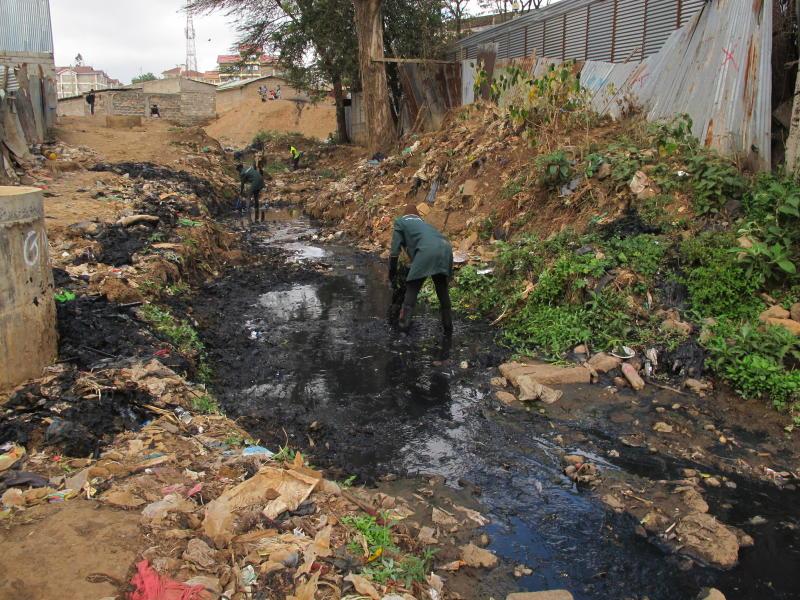To clean Nairobi rivers all Kenya’s agencies must walk the talk
Many initiatives have been proposed to clean the rivers that run through East Africa’s economic powerhouse. Governments, businesses and people should support them

By Jeckonia Otieno for The Standard in Kenya
Recently, Kenya’s Environment Cabinet Secretary Minister Keriako Tobiko ordered the prosecution of polluters of rivers flowing through Nairobi, the capital. This deserves support from all quarters since it is a health and aesthetic issue. That said, Mr Tobiko needs a reminder that he is not the first to make such an order and the end result is what will be used to gauge his success or otherwise.
Former Environment minister, the late John Michuki came up with such a plan which led to ‘cleaning’ of part of Nairobi River and planting of trees. But the no-nonsense minister didn’t go far and the river remains a sewer trench whose water is still uninhabitable for aquatic life.
At the Globe Roundabout in Nairobi’s city centre, there is Michuki Park, full of foliage and where people can while away time. The bank is beautiful but the river channel is not. Speaking to an officer from the Ministry of Lands, I got a hint or two on where the exercise missed the mark. He took issue with the misconception that cleaning a river is tantamount to planting trees.
He argued that planting trees is a good venture but trees do not clean rivers, people do – through well-thought out and coordinated actions. The problem of rivers in Nairobi is not lack of trees on the banks but what flows into the channels.
Stopping the effluent that ends into rivers is the beginning of the long journey. It must not be lost that all the six rivers that flow through Nairobi somehow snake through one, two or more slums; this is where the main problem starts.
However, slums are not the only sources of emissions into the rivers; there are industries that add to the menace. And it is good that the National Environment Management Authority now plans to force landlords to channel raw waste to the city’s sewerage system.
Plans are that those who fail to comply will have their structures declared uninhabitable. This is another good intention whose implementation could be a tall order. Alongside this is the legal option, a winding process that could be open to abuse by well-connected landlords.
Nairobi’s sewer system under the Nairobi Water and Sewerage Company is an obsolete leviathan overtaken by human growth.
The system which is over 50 years old was built to cater for hundreds of thousands but has ended taking in waste – literally – from millions. Its seams are bursting.
For landlords and house owners to empty waste from their property into the sewer system, they must be provided with a functional one in the first place. There are residential areas in Nairobi which have not an inch of sewer line passing through; these resort to use of sewer digesters which they have to empty using exhausters often, question is empty to where? Your guess is as good as mine.
Then there is the small political problem. Slums form a serious political base where demagogues run to when they feel threatened. Any attempts to bring the structures where this base dwells will most definitely be met with political opposition.
The slums will be told how one community or the other is set for extinction even with such a good cause. Are the authorities ready to counter such an eventuality?
Emerging urban centres must learn from Nairobi as a bad example with a good lesson. As they draw up urban plans they must factor in water bodies to avoid pitfalls and thus avoid the sort of chaotic growth that has characterised parts of Nairobi.
Another solution will involve teaching the public to start planning with water bodies as the front and not the back. With buildings having their back to the rivers, there is usually a tendency to turn it into a dumpsite. This is a lesson emerging urban centres can take as they plan even as Nairobi thinks about it in it plans to carry out urban renewal. Finally, where are local communities in this whole process?

This article is reproduced here as part of the Giants Club African Conservation Journalism Fellowships, a programme of the charity Space for Giants and supported by the owner of ESI Media, which includes independent.co.uk. It aims to expand the reach of conservation and environmental journalism in Africa, and bring more African voices into the international conservation debate. Read the original story here.

Join our commenting forum
Join thought-provoking conversations, follow other Independent readers and see their replies